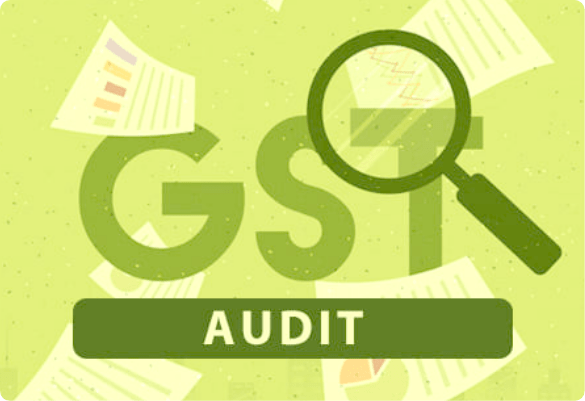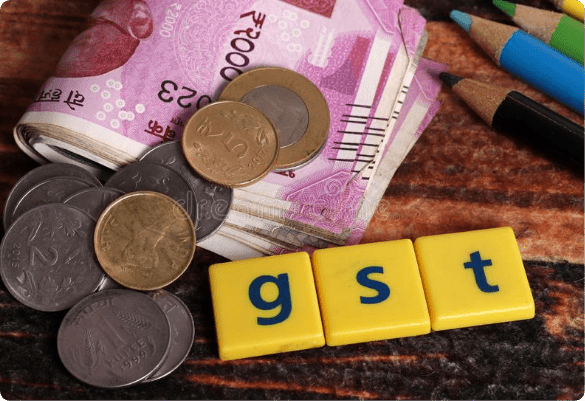Digitalization is no longer a choice. Today, not only can you withdraw/deposit money with one click, but you also can pay your dues, bills and even file taxes online seamlessly. The fact that income tax today can be paid digitally is the biggest testimony to the fact that even the government is laying much emphasis on the digitisation of the economy. As an additional factor, the pandemic just accelerated the pace of the digital wave the country was already riding on.
One process that the GOI streamlined and majorly digitised is the e-way bill. But, what exactly is an e-way bill, who can generate it, and what are the formalities that one may need to follow?
Well, look no further. KYSS has brought to you the ultimate guide to the GST e-way bill registration!
India is bifurcated into several states and territories. Now, if you wish to move/transport goods from one place to another within a state or even between multiple ones, you would need a permit. This permit, which is generated electronically, is called the e-way bill.
Let us read this in more detail.
E-way bill
The e-way bill (electronic-way bill) is a permit document or certificate that allows entities to move goods from one place to another. If the value of the consignment is more than Rs. 50,000, then the transporter needs to compulsorily register under the current GST scheme. This document would include details like the name of the supplier/consignor, destination, route, etc.
An e-way bill, in that sense, is a compliance procedure where the transporter/supplier provides relevant information (through a digital portal) prior to the movement of the goods. Earlier, the entire process was under the purview of VAT; wherein e-way bills were created under the Delivery Note, which was a manual and cumbersome system. But now, through the GST portal, the majority of the process has been made digital.
After the e-way bill is successfully obtained, a single e-way bill number (EBN) is generated. This number is created from GSTN on the e-way bill platform. The same is made available to all parties involved – the transporter, recipient, and the supplier. Thanks to technology, the e-way bill can be seamlessly obtained from an on-site website visit, APIs, etc.
Now that we have explained the concept of the e-way bill, let us see who is required to generate it under various circumstances.
Who should generate an e-way bill?
As per Rule 138 of CGST, 2017, every registered person requires movement of goods of value more than Rs. 50,000 is required to furnish an e-way bill.
For every consignor/transporter who moves goods in his own/hired vehicles by means of railways/air transport/sea vessels, it is compulsory to generate an e-way bill.
If the supplier fails to prepare an e-way bill, the transporter will then have to generate it if he wishes to move his consignment through any of the above-mentioned means.
It must be noted that even an unregistered individual will be required to furnish an e-way bill. However, the onus of verification, compliance, and records falls on the recipient when supply is received from unregistered individuals.
Below is the table on the list of states wherein e-way bill is applicable –
| Andhra Pradesh | Jammu and Kashmir | Punjab |
| Arunachal Pradesh | Karnataka | Puducherry |
| Assam | Kerala | Rajasthan |
| Bihar | Manipur | Sikkim |
| Chhattisgarh | Mizoram | Telangana |
| Gujurat | Madhya Pradesh | Tripura |
| Goa | Maharashta | Tamil Nadu |
| Haryana | Meghalaya | Uttar Pradesh |
| Himachal Pradesh | Nagaland | Uttrakhand |
| Jharkhand | Odisha | West Bengal |
Union territories include Andaman & Nicobar, Chandigarh, Daman & Diu, Dadar & Nagar Haveli, and Lakshwadeep.
Components of e-way bill
The e-way bill consists of 2 components, divided into Part A and Part B
- Part A
Part A of the e-way bill is a detailed account of information like GSTIN of the recipient, place of delivery, the reason for transport, PIN code, value of goods, date of issue, HSN code, invoice number, Goods Receipt Number, number of airway/railway receipt, etc. It is the duty of the supplier to fill this information.
- Part B
Part B mainly mentions the transportation information like details of the transporter, the vehicle number, etc. Such information must be addressed by the transporter.
You can refer to the image below for a better understanding.
Moving on, you must also keep a few documents handy to generate an e-way bill. Let us have a look at what these are.
Documents required for an e-way bill generation
Both supplier and transporter need to ensure that they have all documents required for an e-way bill generation in place. While generating the e-way bill, you will need the following:
- Every invoice/challan/bill related to the goods/consignment.
- If the transportation is through railways, air or ship – Transporter ID, date, TDN (Transporter document number).
- If the transportation is through road – Transporter ID, vehicle number, and also a fully filled Part-B (of the e-way bill).
E-way bill applicability
You are required to generate an e-way bill in the following situations –
- Sales of goods.
- Movement/transportation of goods for all reasons other than supply.
- When an enlisted individual purchases items from an unregistered company or individual, the products must be transported. In such circumstances, the e-way bill must be created by the registered individual.
- For intrastate deals involving the delivery of products inside a similar state or union territory.
- When items are moved from a place of business to a carrier (for extra transportation) and the distance is less than 10 kilometres.
- Also, regardless of whether the items are valued at less than Rs. 50,000, the registered firms, individuals, or carriers can prepare and carry the e-way bill on their own.
Note: Irrespective of the value of the consignment, an e-way bill would be generated if –
- When goods are sent from one state to another. (Here, the e-way bill must be generated by the person who is sending the goods, which could be the owner).
- When handmade goods are transported from one state to another by a person who has been exempted from the registration obligation under Section 24 clauses I and II (For this purpose, handicraft is defined as described in Notification No.32/2017-Central Tax dated 15.09.2017)
An e-way bill is not required in the following scenarios –
- A non-motor vehicle is used as a form of transportation.
- Goods are transferred to the Inland Container Depot (ICD) or Container Freight Station (CFS) for Customs clearance from a Customs port, airport, air cargo complex, or land customs station.
- Goods like household items, jewellery.
- Goods that are supervised by Customs or are sealed by Customs.
- Goods are transported from ICD to Customs port or from one customs station to another under Customs Bond.
- Transit cargo moved to or from Nepal or Bhutan.
- Movement of products occasioned by a defence formation acting as a consignor or consignee for the Ministry of Defense.
- Cargo containers that are empty.
- Consignor conveying products 20 kilometres between his or her place of business and a weighbridge for weighing, accompanied by a delivery challan.
- When the Central Government, State Governments, or a municipal body are the consignors of the commodities being transported by rail.
- Goods identified in the respective State/Union Territory GST Rules as exempt from e-way bill requirements.
- Transportation of certain specified goods, included in the list of exempted goods supplied Annexure to Rule 138(14), items classified as ‘no supply’ under Schedule III, and specific schedules to Central Tax Rate notifications.
E-way bill exemptions
Some goods/items and transactions are exempt from generating an e-way bill. They are listed below:
- Pearls/precious stones or natural/cultural stones
- Kerosene Oil under PDS
- Liquid petroleum gas for both residential and non-domestic consumption.
- Jewellery
- Curd, Lassi, or any other milk-based product
- Fresh or unpasteurized milk
- Fruits
- Vegetables
- Animals (living), plants, and trees
- Meat and animal flesh
- Salt
- Rice or wheat flour that isn’t labelled with a brand name
- Products for stationery
- Tea leaves that have not been processed
Transactions exempted from an e-way bill generation are:
- Goods transported to the Ministry of Defense
- In the event that the items are transported using non-motorized vehicles.
- If the airport, land customs station, or air cargo complex head to a container freight station (CFS) for customs clearance or an inland container depot (ICD).
Validity of an e-way bill
The legitimacy of an e-way bill is determined by the distance travelled by the vehicle transporting the goods.
If the trip is less than 20 kilometres, the validity is for 1 day for an over-dimensional cargo. The number of days will rise by 1 for every additional 20 kilometres.
If the distance is less than 100 kilometres, the validity is 1 day for vehicles that do not fall within the over-dimensional cargo category. The number of days increases by 1 for every extra 100 kilometres travelled.
Consequences of not generating an e-way bill
Not adhering to the guidelines of e-way bill generation can lead to both – monetary and non-monetary losses.
- Monetary loss
The person transporting the goods will need to pay a penalty of Rs. 10,000 or the equivalent amount of tax avoided (whichever is greater) for failing to generate an e-way bill.
- Non-monetary loss
It is possible that a vehicle that is transporting goods without an e-way bill can be confiscated or detained. Only after the payment of the penalty and assessment of tax will the officer release the vehicle. There are a variety of scenarios that can arise as a result of this:
- If the owner desires to pay the penalty, he must pay the full amount of the tax due.
- If not, the defaulter may be fined 50% of the worth of the items.
How to generate an e-way bill online?
You may follow the below-mentioned steps to seamlessly generate an e-way bill:
Step 1: Using your own credentials, log in to the e-way bill portal – https://ewaybill.nic.in/
Note: You need to compulsorily have GST and transporter registration for online e-way bill generation.
Step 2:On logging in, click on the ‘Generate new’ option. In doing so, the main menu page will appear, having a new generation form.
Step 3: If you are a supplier, you’ll need to choose the option ‘Outward,’ whereas if you are the recipient, you’ll have to choose the ‘Inward’ option. Now enter details like name, state, GSTIN, etc. The good part is that a few fields would autofill after providing the right GSTIN number.
Also, provide the correct product name, description, and other relevant information. Do not forget to enter your HSN code as well. Enter CGST/SGST/IGST rates as applicable depending on whether the transportation is interstate or intrastate. Finally, fill in the approximate distance to determine the correct validity of the e-way bill.
Step 4: After filling in all details, click on ‘Submit’ and voila! Your e-way bill is generated! It would appear on your screen with a QR code and e-way bill number (EBN). Has it been printed and handed over to the transporter to carry throughout the trip until the goods are received by the recipient?
What argues the case of an e-way bill against previous systems?
Transporting goods can be an arduous task, given the paperwork and legal formalities required, especially if the goods are supplied intrastate. This was one reason the previous system of e-way bill generation demanded immediate reform. The current e-way bill eliminates almost every flaw of the previous procedures.
E-way bills are time-efficient. Now, you need not wait for a series of clearances to move your goods. As a result, your items reach/move out of your place of business faster, thus improving overall efficiency. These bills also save a great deal of paperwork, which was a major drawback of the previous procedures.
The e-way bill system also allows you to save on expenses. With accurate records and invoicing, you are no longer required to pay any extra amounts for clearance or charges.
The best part of the e-way portal is that it is user-friendly and has a simple interface. E-way bills are easy to generate, compliance is made easier, and the entire system is pushed into greater efficiency.
All said, the e-way bill system does have a few flaws. Internet connectivity is still a problem in the majority of the country. Major states have their own rules and exceptions to deal with. And finally, the errors can creep into the system and bills.
However, the pros outweigh the cons majorly when it comes to e-way bill generation.
Conclusion
GST was introduced to revolutionize the indirect tax system in the country. Transportation of goods that previously came under the purview of VAT has now been streamlined and digitised in the form of e-way bills. E-way bills are documents that represent a permit to transport goods from one place to another. The e-way bill generation has several rules, regulations, and exceptions to adhere to. However, the system is online, easy to use, and efficient.
Watch this blog for more information on GST, e-way bills, and more!





